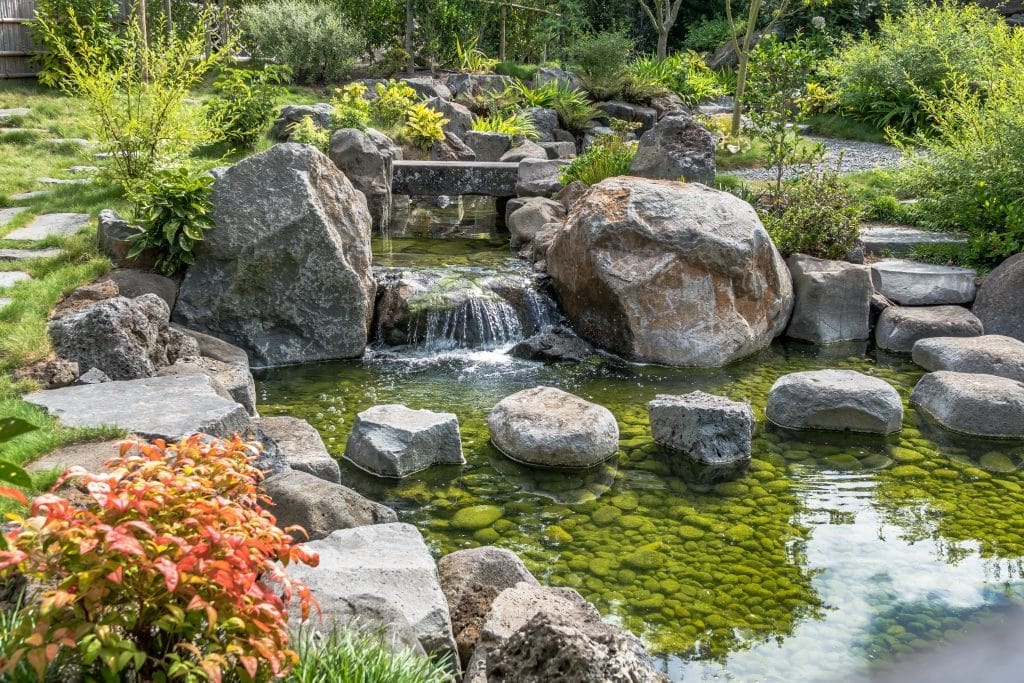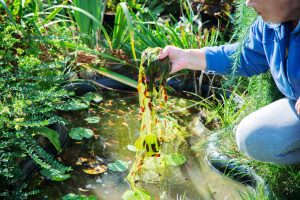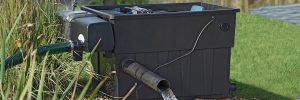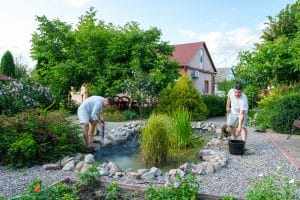
Why Adding Gravel, Stones or Large Rocks to a Pond Can Be a HUGE Mistake: Understanding the Risks and Consequences
Adding gravel, stones, or large rocks to a pond may seem like a good idea for creating a natural look, but it can lead to serious problems that affect water quality and aquatic life.
Many pond owners do not realise that these elements can trap debris and lead to the growth of harmful bacteria. Over time, this can create extra challenges in pond maintenance and harm the ecosystem.

Instead of enhancing the pond environment, rocks and gravel can sometimes disrupt the delicate balance necessary for healthy fish and plant life.
It’s crucial for pond owners to consider how these materials interact with the water and the creatures that inhabit it.
By ignoring these impacts, they may inadvertently contribute to more frequent issues that become costly to manage.
Pond design should prioritise the wellbeing of aquatic life and ease of maintenance.
Alternatives to rocks and gravel can provide visually appealing solutions without the drawbacks that often accompany these common choices.
Key Takeaways
- Gravel and rocks can harm water quality and aquatic life.
- They complicate maintenance efforts and increase costs.
- Alternative materials can enhance pond design without negative impacts.
Understanding the Pond Ecosystem
A pond is not just a body of water; it is a diverse ecosystem that requires balance.
Two key components are beneficial bacteria and microorganisms, along with water quality.
These elements work together to support fish and plant life while maintaining the pond’s health.
Role of Beneficial Bacteria and Microorganisms
Beneficial bacteria and microorganisms play a crucial role in a pond’s ecosystem.
They help break down organic matter, such as leaves and fish waste.
This decomposition process is vital for maintaining a clean and healthy environment.
The presence of these organisms also supports nutrient cycling.
They convert waste into nutrients that plants can use, promoting growth. Without them, waste would accumulate, leading to poor water quality.
Furthermore, beneficial bacteria help control harmful algae blooms.
They do this by outcompeting harmful bacteria for available nutrients. This balance prevents excessive algae growth, which can consume oxygen and harm fish.
Importance of Water Quality in a Pond
Water quality significantly impacts the health of a pond ecosystem.
Factors like pH, ammonia, and dissolved oxygen levels must be carefully monitored. Ideal conditions promote vibrant plant and fish life.
High ammonia levels can indicate poor waste management, leading to stress for fish.
Maintaining appropriate pH levels is crucial; extremes can harm aquatic life. Regular testing ensures a healthy habitat.
Dissolved oxygen is another essential factor.
It is necessary for fish survival and overall pond health.
Aeration systems can help boost oxygen levels, especially in warmer months when oxygen can become depleted.
By keeping water quality in check, the ecosystem remains balanced and thriving.
Design Considerations for Water Features

Creating a water feature requires careful planning to ensure it is both functional and visually pleasing.
Important design factors include the choice of pond liner and the integration of aquatic plants, which contribute to the overall health and aesthetics of the pond.
Selecting the Right Pond Liner
Choosing the right pond liner is critical for any water feature.
It should be durable and resistant to punctures to prevent leaks. Popular options include:
- EPDM (Ethylene Propylene Diene Monomer): This synthetic rubber is flexible and UV resistant, ensuring a long-lasting pond.
- PVC (Polyvinyl Chloride): A cost-effective choice but less flexible, making it more prone to tears.
- Butyl Rubber: Highly durable but can be more expensive.
The pond liner must also be chosen based on the size and shape of the pond. It should extend beyond the edges to allow for proper installation. A well-installed liner prevents water loss and maintains the ecosystem of the water garden.
Incorporating Aquatic Plants
Aquatic plants play a crucial role in pond design.
They help maintain water quality by absorbing nutrients and providing oxygen. Key groups of aquatic plants include:
- Submerged Plants: Such as hornwort, these plants provide oxygen and shelter for pond life.
- Floating Plants: Water lilies not only look beautiful but also provide shade, reducing algae growth.
- Marginal Plants: Positioned around the edges, these include cattails and sedges, helping to stabilise the pond banks.
Choosing a mix of these plants ensures a balanced ecosystem.
They also add layers and depth to the water feature, enhancing its visual appeal. A thoughtful selection promotes biodiversity and resilience in the water garden, creating a thriving environment for fish and other wildlife.
The Impact of Gravel on Aquatic Life

Gravel and stones can have significant effects on the health and balance of aquatic environments. These materials might seem beneficial, but they can negatively influence fish welfare and the growth of pond plants.
Gravel and Fish Welfare
Gravel can create issues for fish welfare in several ways.
First, the rough surfaces can lead to injuries on fish bodies as they swim or interact with the substrate. This can open up pathways for infections and stress.
Additionally, gravel tends to trap fish waste and decaying organic matter. This accumulation can create toxic conditions, leading to harmful ammonia spikes which endanger fish health.
Moreover, gravel can impede fish movement, especially for bottom-dwelling species that prefer a smoother substrate. A more solid base can lead to a less natural environment, affecting their behaviour and overall vitality.
Interactions Between Gravel and Aquatic Plants
Gravel can also affect the growth of aquatic plants.
While some plant species may benefit from the drainage gravel provides, many require a stable substrate to establish roots effectively.
When gravel covers the pond floor, it can hinder light penetration and reduce the ability of plants to photosynthesise. This limits their growth and can disrupt the natural habitat.
In addition, the physical composition of gravel may not retain the essential nutrients that plants need.
This leads to nutrient deficiencies, further impacting plant health, which then affects the entire pond ecosystem, including the fish that rely on these plants for shelter and food.
Pond Maintenance Challenges

Maintaining a pond with a gravel bottom presents unique challenges that can impact both the appearance and health of the ecosystem. Key issues include difficulties related to the gravel itself and managing the accumulation of algae and waste.
Difficulties with Gravel Bottom Ponds
Gravel bottom ponds can create significant maintenance hurdles.
The gravel may trap excess organic matter and fish waste, which can lead to murky water and unpleasant odours. This debris is often difficult to remove without disturbing the pond’s natural balance.
Additionally, gravel can hinder proper cleaning.
Tools like nets or vacuums may struggle to effectively clean the uneven surface.
As a result, pond owners often find themselves investing more time and resources into scrubbing and sifting through the gravel.
Moreover, gravel can complicate water circulation.
Poor circulation can lead to stagnant areas where detritus accumulates, further complicating maintenance routines.
Managing Algae and Waste Accumulation
Algae growth is a common challenge in ponds with gravel bottoms.
The organic material trapped in gravel creates an ideal environment for algae blooms.
These blooms can rob the water of oxygen, endangering fish and other aquatic life.
Controlling algae often requires regular treatments and consistent monitoring. Without these measures, algae can overtake a pond, leading to a green, slimy appearance that detracts from its natural beauty.
Fish waste is another issue.
In a gravel bottom pond, waste can become embedded between the stones.
This accumulation contributes to poor water quality and, as waste decomposes, can create harmful ammonia levels. Regular cleaning and water testing are essential to maintain a healthy environment for fish and plants.
Pros and Cons of Using Gravel

Gravel can create a unique aesthetic in pond settings. It can also support beneficial bacteria that help maintain water quality. However, it also comes with several drawbacks that pond owners must consider carefully.
Benefits of Adding Gravel to Ponds
Gravel can provide a natural look and feel to a pond.
It creates a habitat for various aquatic life. The gravel’s surface area allows beneficial bacteria to thrive, which can improve water quality by breaking down harmful substances like ammonia.
Additionally, gravel can help with erosion control around the pond’s edges.
It prevents soil from washing away during heavy rain. This can be especially useful in stabilising the pond’s banks and improving overall structure.
Gravel can also support plants by allowing them to root firmly.
This enhances the ecological balance in the pond by providing shade and lowering water temperatures. Healthy plants can, in turn, help maintain the pond’s ecosystem.
The Downside of Gravel in Pond Settings
Despite its benefits, gravel can pose significant challenges in pond environments. Over time, gravel may trap debris and organic material, leading to poor water quality.
This buildup can create anaerobic conditions that harm fish and plants.
Gravel can also be difficult to clean. A pond with gravel may require more maintenance, as traditional vacuuming techniques may not effectively reach the gravel beds.
This can lead to increased algae growth and reduced oxygen levels in the water.
Moreover, rounding stones can create sharp edges, which might injure fish. If gravel displaces, it could be challenging to rearrange without harming the pond’s ecosystem.
Therefore, the decision to use gravel should consider both aesthetic and ecological impacts carefully.
Fish Keeping and Habitat Requirements
Maintaining a healthy pond environment is crucial for fish keeping. The habitat must meet the specific needs of various species, particularly koi fish, to thrive.
Considerations for Koi and Other Pond Fish
Koi fish require ample space and specific water conditions to stay healthy. They thrive in deep ponds with a minimum depth of 1.2 metres.
This depth helps maintain a stable temperature and provides protection in colder months.
When choosing rocks and gravel, consider their size and impact on swimming space. Large rocks can limit movement, reducing the fish’s ability to exercise, which is vital for their health.
Moreover, sharp edges can potentially injure fish, leading to stress and illness. Providing a calm environment free from obstacles supports the natural behaviours of koi and other pond fish.
The Balance Between Fish Waste and Water Clarity
Fish waste can significantly affect water quality. Koi produce a considerable amount of waste, which can lead to dangerous levels of ammonia if not managed properly.
Adding gravel or rocks can complicate waste decomposition, making it harder to maintain clear water. Rocks can accumulate debris and waste, promoting algae growth.
This can result in oxygen depletion, harming fish health.
Using effective filtration systems is essential. The right filters can break down waste and keep water clear, promoting a healthy environment.
Regular pond maintenance, including water testing and cleaning, is crucial for managing these factors together.
Alternative Pond Bottom Solutions
Choosing the right material for the bottom of a pond can significantly impact its maintenance and the health of aquatic life. There are several effective alternatives to gravel that can simplify upkeep while providing a suitable environment for plants and animals.
Substitutes for Gravel in Pond Environments
One popular substitute for gravel in ponds is sand. It allows for easy cleaning and can provide a comfortable substrate for many aquatic plants.
Sand’s fine texture helps to anchor plant roots effectively.
Another option is the use of a bare liner. Without any gravel, stones, or large rocks, it becomes much easier to vacuum debris from the bottom.
A bare liner also promotes better water circulation, which is beneficial for fish and other wildlife.
Soft materials like rubber mats can also be considered, offering a flexible and easily maintained surface. These alternatives not only reduce the potential for debris accumulation but also aid in maintaining water clarity.
Ultimately, the choice among these options often comes down to personal preference and the specific needs of the pond’s ecosystem. Each alternative has its own set of advantages that may suit different pond owners’ priorities.
Best Practices for Healthy Pond Management
Maintaining a healthy pond requires careful attention to its ecosystem and ongoing maintenance. Having the right practices in place can promote water quality and support beneficial microorganisms that contribute to a balanced environment.
Establishing a Self-Sustaining Ecosystem
Creating a self-sustaining ecosystem in a pond ensures a stable habitat for fish and plants.
This can be achieved by introducing various pond plants that serve as natural filters. These plants absorb excess nutrients and provide shelter for aquatic life.
Incorporating beneficial microorganisms into the pond water can also enhance its health. These microorganisms break down organic waste, reducing muck accumulation.
It is essential to monitor the introduction of species to maintain balance and prevent invasive species.
Lastly, it is vital to avoid adding large rocks or gravel, which can disrupt natural processes and make maintenance difficult.
Routine Maintenance and Monitoring
Regular maintenance is crucial for sustaining pond health. Owners should check water quality parameters such as pH, ammonia, and nitrate levels.
Testing these factors helps identify potential issues before they escalate. Keeping the water clear promotes a better environment for fish and plants.
Conducting routine inspections of pond plants is also important. Healthy plants contribute to oxygen levels and shade, which can help control algae growth.
Removing any dead or decaying foliage can prevent nutrient spikes.
Maintaining equipment, such as pumps and filters, ensures optimal performance. Regular cleaning and replacement of worn parts extend their life and functionality.
Consistent attention to these details supports a thriving pond environment.
Personalising Your Pond Design
Creating a unique pond design involves merging personal preferences with effective functionality. This section explores how to achieve this balance through careful choices in aesthetics and principles that enhance the water feature’s performance.
Balancing Aesthetics with Functionality
When designing a pond, it is vital to consider both its appearance and how it will function. A beautiful pond that lacks proper water flow or filtration will lead to maintenance issues.
- Size of Rocks: Large rocks can provide visual interest but may block water flow if not placed correctly. Choose rocks that complement the pond’s size.
- Plant Selection: Aquatic plants not only add beauty but also improve water quality. Select plants that thrive in your specific conditions.
A balanced approach ensures that the pond remains visually appealing while supporting a healthy ecosystem. Proper placement and selection of elements can elevate both aesthetics and practicality.
Incorporating Individual Taste with Best Practices
Personal preference plays a significant role in pond design. Homeowners can express their style while following best practices to ensure longevity and health of the water feature.
- Custom Edging: Using stones or gravel in a way that enhances the pond’s shape can reflect individual taste. Skilled placement can highlight the pond’s natural curves.
- Lighting: Incorporating lighting features can enhance the pond’s beauty at night. LED lights can add drama without consuming excessive power.
Each choice should be mindful of ecological impact. By blending personal style with expert recommendations, the pond design can flourish and provide enjoyment for years to come.
The Future of Pond Landscaping Trends
In pond landscaping, new ideas and techniques are emerging. These changes focus on innovative materials and sustainability, enhancing both beauty and environmental responsibility in water features.
Innovative Materials and Techniques
Innovative materials are transforming pond design. New options like rubber liners and advanced filtration systems provide efficient solutions. They create a healthier environment for plants and aquatic life.
Natural-looking materials, like locally sourced stone, help blend ponds into their surroundings. These options reduce the visual impact of the pond’s structure while enhancing its natural beauty.
Preformed pond kits are also gaining popularity. They simplify installation and ensure that water features maintain their integrity over time. Homeowners appreciate how these kits save time and effort, making pond creation more accessible than ever.
Sustainability in Pond Design
Sustainability is becoming crucial in pond design. Designers are using eco-friendly materials and practices to lessen environmental impact.
This includes opting for native plants that require less upkeep and water.
Water conservation techniques, such as rain gardens, help retain runoff and minimise water usage.
These features also improve the surrounding landscape’s aesthetics.
Additionally, incorporating wildlife habitats supports local biodiversity.
Creating spaces for frogs, birds, and beneficial insects can enhance the enjoyment and functionality of the water garden.
This balance between beauty and ecology is central to future pond designs.



